While a rule like the Gilbert Arenas provision can flatter its namesake, the late Ted Stepien, former owner of the Cavaliers, may have preferred not to go down in history as the reference point for the Ted Stepien rule.
Stepien, who owned the Cavs in the early 1980s, made a series of trades that left the franchise without first-round picks for several years. To avoid having its teams end up in similar situations going forward, the NBA eventually instituted a rule that prohibited a club from trading out of the first round for consecutive future seasons. It’s now informally known as the “Stepien rule,” even though the Cavs owner isn’t explicitly mentioned in the league’s Collective Bargaining Agreement.
Because the Stepien rule applies only to future draft picks, teams are still permitted to trade their first-rounders every year if they so choose, but they can’t trade out of the first round for back-to-back future drafts.
For instance, since the Mavericks have traded their 2024 first-round pick to New York, they aren’t currently permitted to trade their 2025 first-rounder. Following the 2024 draft, Dallas would regain the right to trade that 2025 first-round pick, since the ’24 first-rounder will no longer be considered a future pick.
The Stepien rule does allow a team to trade consecutive future first-round picks if the team has acquired a separate first-rounder from another team for either of those years. So if Dallas were to trade for another team’s 2025 first-rounder next week, that would give the Mavericks the flexibility to move their own 2025 pick immediately, without having to wait until after the 2024 draft.
Teams are permitted to include protection on draft picks. This can create complications related to the Stepien rule, which prevents teams from trading a first-round pick if there’s any chance at all that it will leave a team without a first-rounder for two straight years.
For example, the Trail Blazers owe their lottery-protected 2025 first-round pick to Chicago — it will only convey if it falls outside of the top 14. That traded 2025 pick is protected through 2028, and as long as there’s still a chance it won’t convey immediately, the Blazers are prevented from unconditionally trading any of their next few first-round picks.
Portland could trade a conditional 2027 first-round pick, but a team acquiring that pick would have to be OK with the fact that it would be pushed back by one year every time the protected pick Portland has traded to Chicago doesn’t convey.
There are a handful of ways for teams to work around the Stepien rule. Phoenix is one team that has taken advantage of those workarounds in recent years. When the Suns acquired Kevin Durant at the 2023 deadline, they gave up first-round picks in 2023, 2025, 2027, and 2029. The Stepien rule prevented them from surrendering their 2024, 2026, or 2028 picks at that time, but remember, a team just needs to control one first-round pick in every other future draft — not necessarily its own pick.
That means the Suns were also able to include “swap rights” to their 2028 first-rounder in the deal for Durant and swap rights for their 2024, 2026, and 2030 first-rounders in a subsequent trade for Bradley Beal. Phoenix has actually traded swap rights twice on a couple of those future picks, putting them in line to receive the least favorable of three separate first-rounders. Giving up swap rights is a way for teams to extract value from a future first-round pick without moving out of that year’s first round.
The Suns will be able to work around the Stepien rule again this summer if they so choose by trading their 2024 first-rounder after a selection has been made. As noted above, once a pick has been used to draft a player, it’s no longer subject to the Stepien rule. Phoenix could agree to move its 2024 first-rounder prior to the draft, select a player on behalf of its trade partner, then officially finalize the deal after the draft.
Here are a few more rules related to trading draft picks:
- The “Seven Year Rule” prohibits teams from trading draft picks more than seven years in advance. Once the 2024/25 league year begins on July 1, a 2031 draft pick can be traded, but a 2032 pick cannot be dealt.
- The Seven Year Rule applies to protections on picks as well. If a team wants to trade a lottery-protected 2031 first-rounder this July, it can’t roll those protections over to 2032. That’s why, typically, the further into the future a traded pick is, the less likely it is to be heavily protected.
- A team can add protection to a pick it has acquired as long as there wasn’t already protection on the pick. For instance, Brooklyn currently controls Phoenix’s unprotected 2025 first-round pick. If the Nets want to include that selection in a trade, they would be permitted to put, say, top-four protection on it.
- Beginning in 2024/25, a team that finishes the season with a team salary above the second tax apron will lose the right to freely trade its first-round pick seven years out — that pick would become “frozen.” For example, if the Suns finish next season above the second apron, their 2032 first-rounder can’t be traded. If the team stays below the second apron for at least three of the subsequent four seasons, its pick becomes “unfrozen” and is once again tradable; if not, it remains frozen and is moved to the end of the first round for that draft.
- For salary-matching purposes, a traded draft pick counts as $0 until the player signs a contract.
Note: This is a Hoops Rumors Glossary entry. Our glossary posts will explain specific rules relating to trades, free agency, or other aspects of the NBA’s Collective Bargaining Agreement. Larry Coon’s Salary Cap FAQ was used in the creation of this post.
Earlier version of this post were published in previous years.
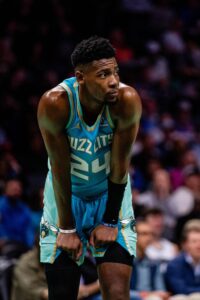 When a new management group takes over a rebuilding team, the first order of business is to establish which of the incumbent players are part of the long-term plan. In the Hornets’ case, there’s one obvious sure thing: Miller, whose impressive rookie season was largely overlooked while
When a new management group takes over a rebuilding team, the first order of business is to establish which of the incumbent players are part of the long-term plan. In the Hornets’ case, there’s one obvious sure thing: Miller, whose impressive rookie season was largely overlooked while 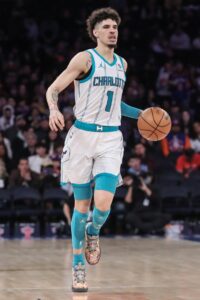
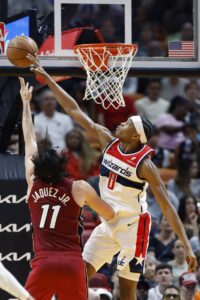 In some ways, the Pistons being as dreadful as they were made things a little easier on the Wizards, since Detroit endured a historic 28-game losing streak and has been abysmal for multiple years now. But the Wizards only finished with one more win and a very similar net rating (-8.7 vs. -9.0; somehow the Hornets had the worst mark in the league at -10.6, while Portland was also at -9.0).
In some ways, the Pistons being as dreadful as they were made things a little easier on the Wizards, since Detroit endured a historic 28-game losing streak and has been abysmal for multiple years now. But the Wizards only finished with one more win and a very similar net rating (-8.7 vs. -9.0; somehow the Hornets had the worst mark in the league at -10.6, while Portland was also at -9.0).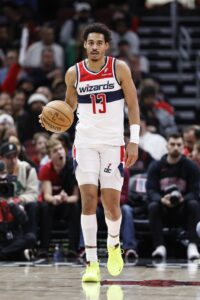 Jordan Poole
Jordan Poole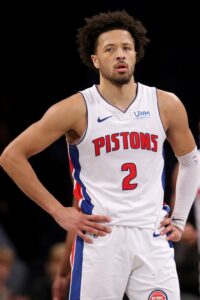 That goal seemed sensible enough through the first three games of the season, which included a pair of wins and a one-point loss. It looked – to put it mildly – increasingly unrealistic as Detroit lost its next 28 games in a row and 35 of its next 36 in total. Suddenly, the organization’s goal was simply to avoid the embarrassment of posting the NBA’s worst record of all-time. The team avoided that fate, but its 11-32 finish following a 3-36 start was hardly cause for legitimate optimism entering the summer.
That goal seemed sensible enough through the first three games of the season, which included a pair of wins and a one-point loss. It looked – to put it mildly – increasingly unrealistic as Detroit lost its next 28 games in a row and 35 of its next 36 in total. Suddenly, the organization’s goal was simply to avoid the embarrassment of posting the NBA’s worst record of all-time. The team avoided that fate, but its 11-32 finish following a 3-36 start was hardly cause for legitimate optimism entering the summer.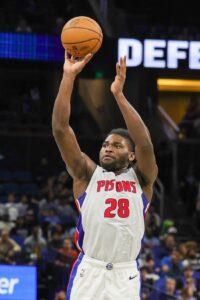
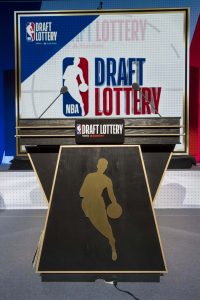
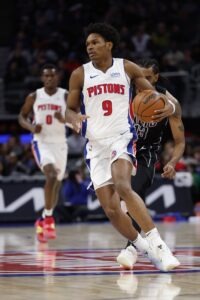 On stage:
On stage: 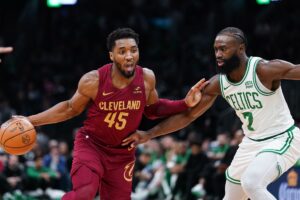 In
In